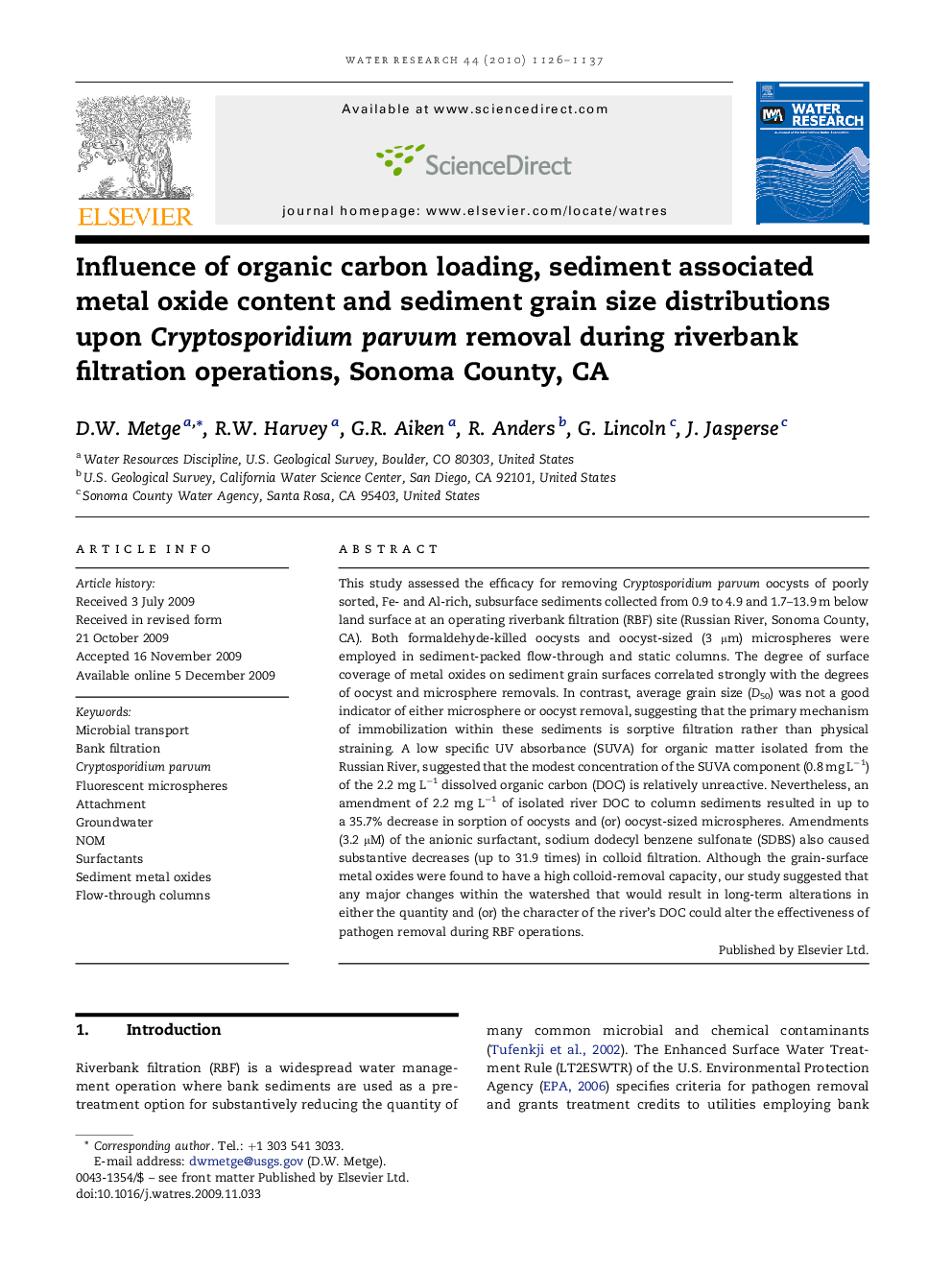| Article ID | Journal | Published Year | Pages | File Type |
|---|---|---|---|---|
| 4482488 | Water Research | 2010 | 12 Pages |
This study assessed the efficacy for removing Cryptosporidium parvum oocysts of poorly sorted, Fe- and Al-rich, subsurface sediments collected from 0.9 to 4.9 and 1.7–13.9 m below land surface at an operating riverbank filtration (RBF) site (Russian River, Sonoma County, CA). Both formaldehyde-killed oocysts and oocyst-sized (3 μm) microspheres were employed in sediment-packed flow-through and static columns. The degree of surface coverage of metal oxides on sediment grain surfaces correlated strongly with the degrees of oocyst and microsphere removals. In contrast, average grain size (D50) was not a good indicator of either microsphere or oocyst removal, suggesting that the primary mechanism of immobilization within these sediments is sorptive filtration rather than physical straining. A low specific UV absorbance (SUVA) for organic matter isolated from the Russian River, suggested that the modest concentration of the SUVA component (0.8 mg L−1) of the 2.2 mg L−1 dissolved organic carbon (DOC) is relatively unreactive. Nevertheless, an amendment of 2.2 mg L−1 of isolated river DOC to column sediments resulted in up to a 35.7% decrease in sorption of oocysts and (or) oocyst-sized microspheres. Amendments (3.2 μM) of the anionic surfactant, sodium dodecyl benzene sulfonate (SDBS) also caused substantive decreases (up to 31.9 times) in colloid filtration. Although the grain-surface metal oxides were found to have a high colloid-removal capacity, our study suggested that any major changes within the watershed that would result in long-term alterations in either the quantity and (or) the character of the river's DOC could alter the effectiveness of pathogen removal during RBF operations.
